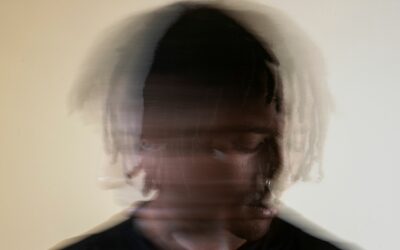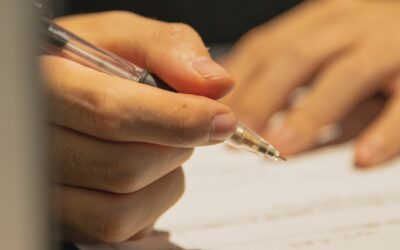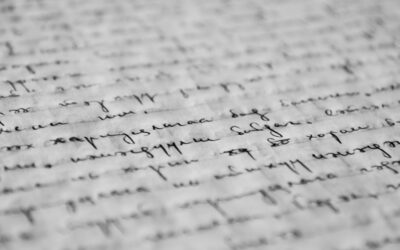By Jens Larsen and Cæcilie Liv Carlsen
Art has the ability to step in where words are no longer sufficient. Therefore, art has always been a way to process both the inner and outer world. The great artistic geniuses are often associated with mental illness and trauma, giving them a way to express their emotions. Today, art is used as a form of therapy.
When integrating new methods into our work with clients, it can be valuable to use simple and clear models and structures. Art therapy work has specific sequences or dramaturgies in the same way as psychological, cognitive and therapeutic approaches. An art therapy session can provide overview and calm, but is also adapted to improvise depending on the situation and the client.
The argument for art therapy is that art is not only healing because it is art, but that it must also be placed in a professional therapeutic framework where the therapist plays a crucial role.
In this article, we give you an overview of the different phases of art therapy based on the approach called The Bridge, formulated by Paulo Knill, researcher, art therapist, artist and founder of The European Graduate School in Saas-fee, Switzerland. You will gain insight into the theoretical background and then go through the phases in more general terms that can be used when working with the different art forms used in art therapy.

A bridge to art making and play
The argument for art therapy is that art is not only healing because it is art, but that it must also be placed in a professional therapeutic framework where the therapist plays a crucial role. It is the therapist’s job to create a safe environment from which development and healing is possible.
Paulo Knill in Principles and Practice of Expressive Arts Therapy: Toward a Therapeutic Aesthetics (2004) emphasizes the importance of structuring art therapy sessions, especially at the opening and closing of the session. Here, the client is guided in and out of an “alternative world experience” of art making and play. Knill describes the flow of the session as a bridge: a bridge that connects the client’s daily reality to art making and then another bridge towards the end of the session to guide the client to closure.
The art therapy process
An art therapy program is typically divided into four parts: check-in, warm-up, the art-making process with aesthetic analysis and finally the harvest with art dialogue. In this section, we go through the different phases. Again, this is a more general description that you can keep in mind when you and your client go into a session.
- Phase 1: Check-in
Each session begins with the group of participants sharing thoughts about where they are in life and their potential challenges. Sitting in a circle is an important ritual to create a sense of community and participation. - Phase 2: Warm-up
Here we can typically do a small preparatory exercise for the art making, such as dancing, moving as the theme of the day or physically preparing a space. - Fase 3: Kunstfremstilling
I kunstfremstillingsprocessen bevæger vi os væk fra at fokusere på de problematiske situationer fra dagligdagen og ind i et kunstatelier, hvorfra noget andet og nyt kan opstå. Dette kunstrum er et åbent rum for forestillingsevnen, sanserne og legen. En kunstøvelse, som facilitatoren har forberedt, introduceres, hvor en sådan øvelse eksempelvis kan være at male et abstrakt maleri.
Kunstfremstillingsprocessen sker inden for kunstmodaliteterne: visuel kunst, musik, dans, drama og storytelling. Derefter vil facilitatoren guide gruppen i en æstetisk analyse af det kunstneriske udtryk, som processen fremkaldte. Her diskuterer deltagerne kunsten, der dukkede op: overfladen, processen, oplevelsen og reduktionen til det endelige udtryk. Skønhed og sensitivitet som drivkraft og motivation vækker kroppen og kan være en indgang til klienten. Den kunstneriske proces skal være attraktiv og nærende, så den hjælper klienten med at overvinde frygten for fiasko. At vække sanserne hos en klient er en vigtig adgang til at nå ind til personen.
Gode spørgsmål ved kunstdialogen:- What colors attracted you? –
- How did you feel during the process? –
- Are you judging the result? –
- Were you able to immerse yourself or were you distracted? –
- Were you surprised?
- Phase 4: Fall – Art Dialogue
This phase will support the client in shifting gears and preparing to return to their normal daily life. Here the client will be supported in an art dialog about how the art making can be transferred to ‘real’ life. This is where the fruits of the artwork are harvested. The client is empowered to find the answers themselves by starting sentences and ending them with the voice of art: “I (art) have come to tell you about your pain…. ” or “a piece of advice I want to give you today is…” or “my poem is here to show me that my wish for the future is possible and to make it a part of my everyday life, I can do a,b or c”. Only the client can have this dialog.
This way, only the client can see and feel the answer and guide themselves in terms of relief and treatment, but with the therapist as a partner. This means that in the process, the client first arrives at the bridge in the first phase, and then in phase 2 the client steps onto the bridge through a warm-up.
Phase 3 of the art making process takes us onto the bridge and then to the final phase where we harvest and apply the art dialogue. This is of course a linear interpretation, but it can be good for you as a practitioner to be aware of. As you become familiar with the structure, you can be more flexible.



